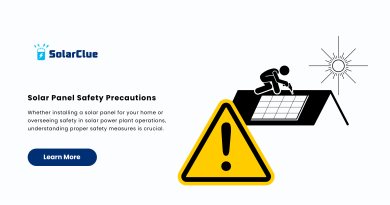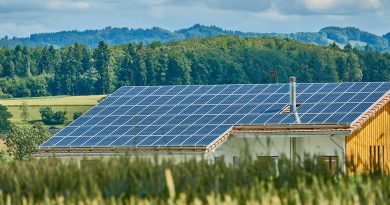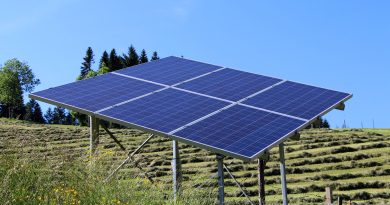What Is The Definition Of STC For A Solar Panel?
When evaluating solar panels, you may come across the term “Standard Test Conditions” (STC). This concept is fundamental in the solar industry as it provides a standardized benchmark for comparing the performance of different solar panels. In this blog post, we will delve into what STC means, the specific parameters that define it, and its significance in understanding solar panel output under real-world conditions.
Table of Contents
- 1 The Definition of STC and Its Importance in Solar Panel Evaluation
- 2 The Specific Parameters Used to Define STC
- 3 The Relationship Between STC and Real-World Performance
- 4 Factors Affecting Solar Panel Output Under Actual Conditions
- 5 The Impact of Temperature and Irradiance on STC Values
- 6 The Role of STC in Solar Panel Selection and System Design
- 7 Comparing STC Values of Different Solar Panel Models
- 8 The Future of STC and Its Relevance in the Solar Industry
- 9 Common Misconceptions About STC and Solar Panel Performance
- 10 Key Parameters in Standard Test Conditions (STC)
- 11 Conclusion
- 12 FAQ Section
The Definition of STC and Its Importance in Solar Panel Evaluation
What Are Standard Test Conditions (STC)?
- Standard Test Conditions (STC) are a set of laboratory conditions under which solar panels are tested to determine their performance metrics, such as wattage, efficiency, and voltage. These conditions provide a consistent basis for comparing the performance of different solar panels.
Importance of STC in Solar Panel Evaluation
- Benchmarking: STC allows manufacturers and consumers to compare solar panels on a level playing field. It ensures that the performance data provided by manufacturers are based on the same conditions, making it easier to evaluate and select the right solar panel for your needs.
- Predictable Performance: STC provides a reliable reference point for estimating the potential energy output of a solar panel, though actual performance may vary depending on real-world conditions.
The Specific Parameters Used to Define STC
STC is defined by three key parameters:
1. Irradiance
- Definition: Irradiance refers to the amount of solar power received per unit area, measured in watts per square meter (W/m²).
- STC Value: Under STC, irradiance is set at 1000 W/m², which simulates a clear, sunny day with the sun directly overhead.
2. Cell Temperature
- Definition: This refers to the temperature of the solar cells within the panel, measured in degrees Celsius (°C).
- STC Value: The cell temperature is standardized at 25°C (77°F) under STC. This is a moderate temperature that allows for a consistent comparison, though actual cell temperatures can vary widely in real-world conditions.
3. Air Mass (AM)
- Definition: Air mass describes the path length of sunlight through the Earth’s atmosphere relative to its shortest possible length when the sun is directly overhead. It is a dimensionless value.
- STC Value: The air mass under STC is set at 1.5, which corresponds to the sun being at an angle of about 48° from the vertical, simulating typical conditions in the continental United States.
The Relationship Between STC and Real-World Performance
STC vs. Real-World Conditions
- Ideal vs. Actual: While STC provides a standardized method to compare solar panels, real-world conditions rarely match STC. Factors like varying irradiance, higher temperatures, shading, and different air masses can significantly impact actual solar panel performance.
De-rating Factors
- Performance Variability: Solar panels typically operate at lower efficiency than their STC rating under real-world conditions. Manufacturers often provide a “de-rating” factor or performance ratio to estimate actual output under typical conditions, which is usually between 75-90% of the STC-rated output.
Factors Affecting Solar Panel Output Under Actual Conditions
1. Temperature
- Impact on Efficiency: Solar panels become less efficient as the temperature increases above the STC reference of 25°C. The rate at which efficiency decreases is known as the temperature coefficient, usually expressed as a percentage loss per degree Celsius.
- Hot Climates: In hot climates, solar panels may operate at temperatures significantly above 25°C, leading to lower than expected power output.
2. Irradiance Variations
- Fluctuating Sunlight: Real-world irradiance can fluctuate due to factors like weather, time of day, and seasonality. Lower irradiance results in reduced power output compared to the STC rating.
- Cloud Cover: On cloudy days, irradiance can drop significantly, which reduces the solar panel’s energy production.
3. Shading
- Partial Shading: Even partial shading from trees, buildings, or dirt on the panels can drastically reduce the performance of solar panels, especially if the system does not include microinverters or optimizers.
4. Air Mass and Angle of Incidence
- Angle of Sunlight: The angle at which sunlight strikes the solar panel (angle of incidence) affects how much light is absorbed. The air mass increases as the sun moves lower in the sky, reducing the panel’s efficiency.
The Impact of Temperature and Irradiance on STC Values
1. Temperature Coefficient
- Definition: The temperature coefficient is a parameter that quantifies how much the output of a solar panel decreases as the temperature rises above 25°C.
- Practical Implication: A typical temperature coefficient might be -0.5% per degree Celsius. This means for every degree above 25°C, the panel’s output decreases by 0.5%.
2. Irradiance Sensitivity
- Non-linear Performance: Solar panels do not perform linearly with irradiance changes. At lower irradiance levels, the panel’s output decreases, but not always proportionally.
The Role of STC in Solar Panel Selection and System Design
1. Choosing Solar Panels
- Comparative Analysis: Use STC values to compare different solar panel models in terms of efficiency, power output, and temperature coefficient.
- System Design: When designing a solar power system, consider how the local climate will affect performance relative to STC. For example, in hotter climates, choosing panels with a lower temperature coefficient may yield better performance.
2. Real-World Expectations
- Performance Estimates: Be mindful that the actual energy production of a solar panel system will likely be lower than the STC-rated output. System designers typically include a performance ratio to account for this difference.
Comparing STC Values of Different Solar Panel Models
1. Efficiency
- Higher Efficiency: Panels with higher efficiency ratings at STC will generate more power per square meter. This is crucial for installations with limited space.
2. Power Output
- Wattage Comparison: Panels with higher STC-rated wattage can produce more electricity under ideal conditions, but it’s essential to also consider how they perform under non-STC conditions.
3. Temperature Coefficient
- Lower Coefficient: Panels with a lower temperature coefficient will experience less performance degradation in hotter conditions, making them more suitable for warm climates.
The Future of STC and Its Relevance in the Solar Industry
1. Enhanced Testing Standards
- Beyond STC: There is a growing interest in developing additional testing standards that more accurately reflect real-world conditions, such as Nominal Operating Cell Temperature (NOCT) and PVUSA Test Conditions (PTC).
2. Technological Advancements
- Improved Materials: Advances in solar panel materials and technology may reduce the gap between STC and real-world performance, making STC values even more relevant for predicting actual output.
3. Consumer Education
- Better Understanding: As consumers become more informed about STC and its implications, they can make more educated decisions when selecting solar panels, leading to more accurate expectations and higher satisfaction.
Common Misconceptions About STC and Solar Panel Performance
1. Myth: STC Represents Real-World Output
- Reality: STC values represent ideal laboratory conditions, not actual outdoor performance. Expect real-world output to be lower due to environmental factors.
2. Myth: Higher STC Ratings Always Mean Better Performance
- Reality: A higher STC rating is a good indicator of potential output, but it’s crucial to consider how the panel performs under various conditions, including high temperatures and low irradiance.
3. Myth: All Solar Panels Perform the Same Under STC
- Reality: While STC provides a standardized comparison, different panels may perform better or worse under real-world conditions based on their design and material properties.
Key Parameters in Standard Test Conditions (STC)
| Parameter | STC Value | Significance |
|---|---|---|
| Irradiance | 1000 W/m² | Simulates full sunlight on a clear day |
| Cell Temperature | 25°C | Standard temperature for testing, representing mild conditions |
| Air Mass (AM) | 1.5 | Represents sunlight passing through the atmosphere at a 48° angle |
Conclusion
Understanding Standard Test Conditions (STC) is crucial for anyone considering solar energy. STC provides a standardized benchmark for comparing solar panels, but it’s important to recognize that real-world performance may differ due to factors like temperature, shading, and varying sunlight levels. By considering both STC ratings and the environmental conditions in your location, you can select the most suitable solar panels for your needs and ensure your solar power system performs optimally. As the solar industry continues to evolve, enhanced testing standards and consumer education will further bridge the gap between laboratory conditions and real-world performance.
FAQ Section
1. What are Standard Test Conditions (STC) in solar panels?
STC refers to a set of specific laboratory conditions (irradiance of 1000 W/m², cell temperature of 25°C, and air mass of 1.5) used to measure and compare the performance of solar panels.
2. Why is the STC rating important?
The STC rating provides a standardized benchmark to compare different solar panels, helping consumers and installers make informed decisions. It also gives an estimate of the panel’s maximum power output under ideal conditions.
3. Do solar panels perform the same under real-world conditions as they do under STC?
No, real-world conditions often differ from STC, leading to lower actual power output. Factors such as temperature, shading, and varying irradiance levels can affect performance.
4. How does temperature affect solar panel performance compared to STC?
Higher temperatures can reduce a solar panel’s efficiency, lowering its output compared to the STC rating. This is quantified by the temperature coefficient, which indicates the percentage of power loss per degree Celsius above 25°C.
5. Can STC values help in designing a solar power system?
Yes, STC values are useful for system design, but it’s essential to account for real-world conditions and include de-rating factors to estimate actual energy production more accurately.



